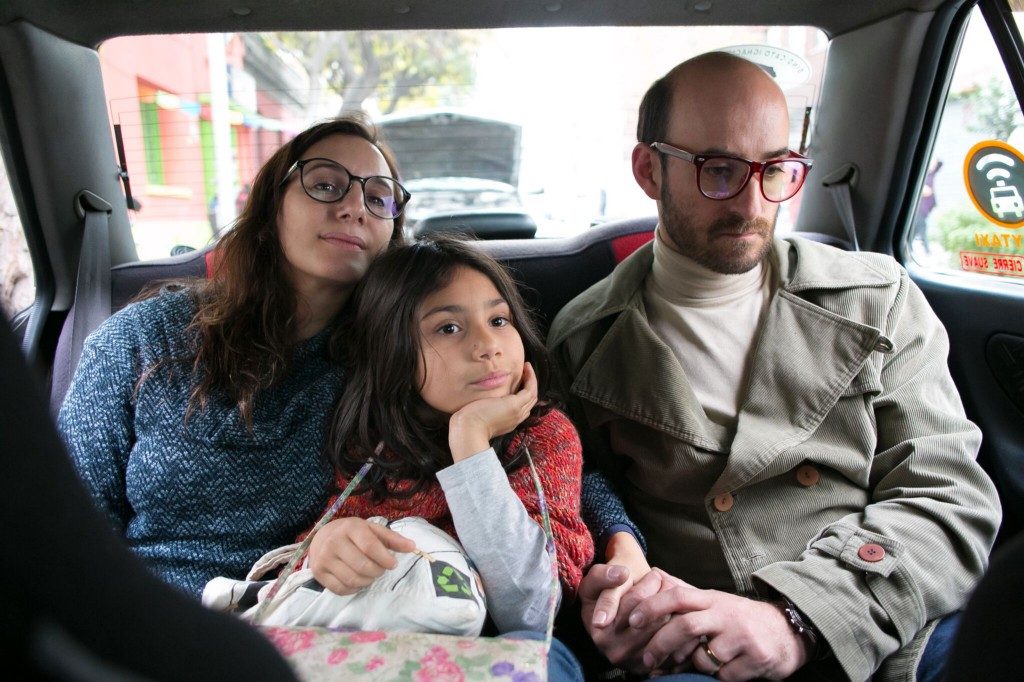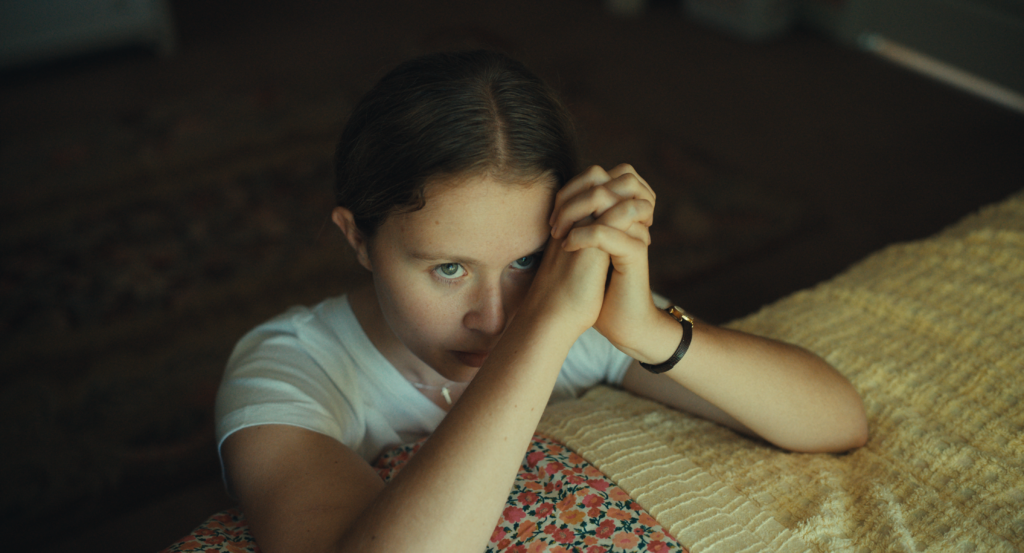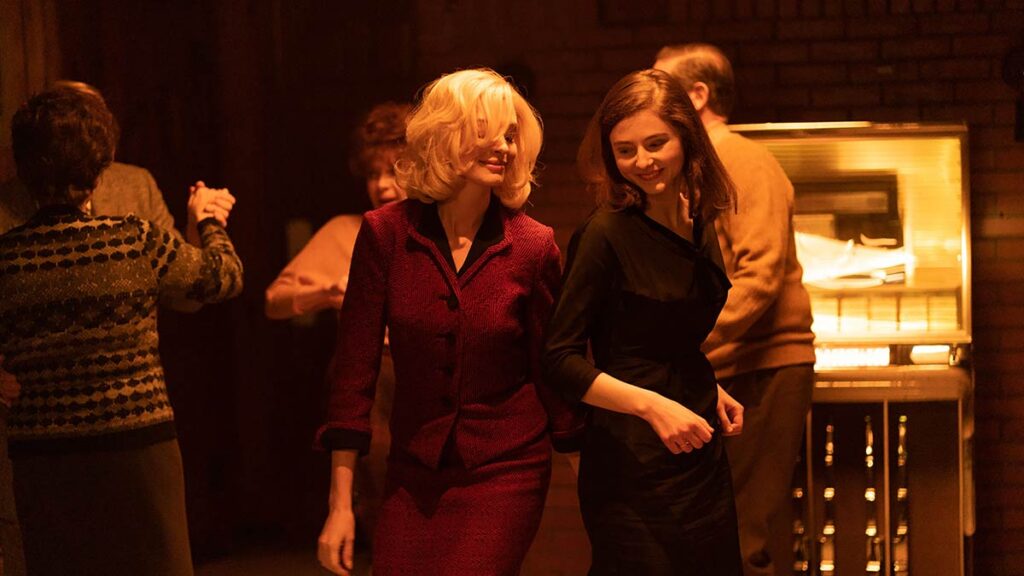Now based in Chile, Alicia Scherson has studied, worked, and lived in Cuba, Spain, and the U.S. Her feature films “Play,” “Turistas,” and “Il Futuro” have been shown in theaters internationally and have received several awards at film festivals. Scherson is also a scriptwriter and consultant for films and series, and her recent credits include “Rara” and “Karadima.” She is an associate professor at the Universidad de Chile.
“Family Life,” or, “Vida de Familia,” will premiere at the 2017 Sundance Film Festival on January 20. The film is co-directed by Cristián Jiménez.
W&H: Describe the film for us in your own words.
AS: It’s an adaptation of a short story by Alejandro Zambra. It’s about a family, a house, a lonely man, a single mother, and a cat.
Martin, the lonely man, is in charge of the family house and the cat while the family is away. They are all around 40 but very different, mainly because Martin is not a family guy at all. But then he meets Pachi, a single mother, and her little son, and all of the sudden he starts wishing that house, that family life, was his own. And his wish comes true — at least for a while.
W&H: What drew you to this story?
AS: My first daughter was nine months old, and I was beginning to wonder how was I going to go back to filmmaking. I was still breastfeeding and spent a lot of time at home in my first family house. My last movie, “Il Futuro,” had been a great experience but quite a complicated one: a four-country co-production with international crew and cast that took us many years to complete. I didn’t want to start [another] project like that in such a moment of my life.
So, I was talking to my good friend Cristián Jiménez, who had just finished his third movie, “Voice Over,” about these fears, and we started thinking of making something together — something lighter, just with friends. I said we could shoot inside my house, a small, old house but with a lot of mysterious camera angles. We could make a domestic film.
Some weeks later, I read the short story by Alejandro, who is also a friend of ours, and everything magically fell into place.
W&H: What do you want people to think about when they are leaving the theater?
AS: I would like them to think it was a comedy and then decide maybe it was not — or the other way around. To tell a friend the movie is clearly against families, and then tell another friend it is really about being 40 and looking for happiness.
W&H: What was the biggest challenge in making the film?
AS: The fact that the shooting was in my house and my baby was on set made the whole shooting style very different from other movies. The crew had to adapt to the baby’s schedule, and I had to learn to let go, trust my co-director, and be able to feed the baby while he prepared a shot.
My partner and I lived for three weeks in the movie set — our same house but with different props — so we shared our house not only with a film crew but also with a fictional family. That was crazy.
W&H: How did you get your film funded? Share some insights into how you got the film made.
AS: This particular movie was thought of as a collective small budget project from the beginning. We created a production company, Peso Pluma (Feather Weight), along with the other director, the writer, and the producers, so we were all partners.
We signed special deals with the cast and crew, deferring part of the payment depending on the sales. For the shoot, we got some small public funding and a couple of private investors. To finish, we made agreements with the color and sound post-production facilities. After we had a first cut, we were able to get local distribution funds and close a pre-sales agreement with our sales agent, Visit Films.
W&H: What does it mean for you to have your film play at Sundance?
AS: We always thought of “Family Life” as a Sundance movie, and we were right. The programmers at Sundance have a very contemporary global vision; they don’t look for films that necessarily fit a particular label or genre. Being a woman and Chilean, some labels can be very heavy to wear.
To screen at Sundance means that the movie can be read in a more open way, letting it breathe at its own rhythm.
W&H: What’s the best and worst advice you’ve received?
AS: Best advice: I was an MFA student at Chicago, and a teacher ask me to completely re-shoot a short film. I was devastated. She was a painter, and she didn’t understand what the big deal was — she had thrown away and re-painted many times. So I did it, and it was great. That short, “Crying Underwater,” was my real beginning as a filmmaker.
The worst advice was to use my own car as a production car for shooting my second film, “Turistas.” It was destroyed.
W&H: What advice do you have for other female directors?
AS: To try to create a work method of their own, an ideal of an artist that is their own, which is so difficult because the role models are mainly men, and those images are not very useful.
It’s okay if you write while cooking and the scripts have pesto stains. It’s okay if you don’t write every day. It’s okay if you feel it’s more important to teach, party, have a baby, or read a book than to make another film in a particular moment. There is no such thing as a career. It’s just art.
W&H: Name your favorite woman-directed film and why.
AS: Agnes Varda’s “Cléo from 5 to 7.” She is a smart and fun director who started in a time of smart and fun men. And she was always herself. All of her films are clever and beautiful. And you can tell she enjoys making them.
W&H: Have you seen opportunities for women filmmakers increase over the last year due to the increased attention paid to the issue? If someone asked you what you thought needed to be done to get women more opportunities to direct, what would be your answer?
AS: I have seen a big change in numbers! When I started in 2005, I was literally the only active woman director in Chile doing feature-length films — there have always been more women in documentaries, short films, and TV. It was not an honor to be alone — it was boring. Now, we are many.
The problem is that this change in numbers goes just until the first movie. From the second movie on, women filmmakers have a much harder time consolidating their work.
I think we need more women as programmers, directors of festivals, members of juries, studio executives, etc. That will be a great way to balance. As in many other areas of life, the controlling elite exists, and it’s usually white and male.







